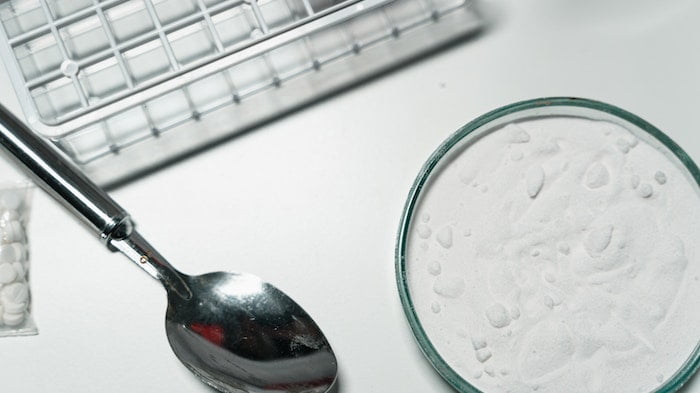According to the latest statistics, the UK is the second-largest market for online sales of Xanax and Xanax addiction following the US.
The UK accounts for 22% of all online sales of Xanax and has been linked to over 200 deaths in the UK since 2019. (1)
For more information about statistics related to Xanax, please follow this link.
The purpose of this article is to discuss snorting Xanax, such as its side effects, dangers, and addiction.
However, this article will also discuss what Xanax is and how people in the UK can get help for Xanax addiction.
What is Xanax?

Xanax, or Alprazolam, is a benzodiazepine commonly used to treat anxiety disorders.
Other common names for Xanax include:
- Bezos
- Bricks
- Bars
- Zan bars
Benzodiazepines treat anxiety by affecting certain neurotransmitters in the brain that increase a chemical called gamma-aminobutyric acid (GABA).
GABA is known as a primary inhibitory neurotransmitter. Low levels of GABA can lead to anxiety, mood disorders, epilepsy, and chronic pain. (2)
Therefore, Xanax can be used to treat all these issues.
An increase in GABA can also increase help with:
- Insomnia
- ADHD
- Low blood pressure
- Fat burning
- Gaining muscle mass
Xanax comes in oral tablets and in either immediate-release or extended-release form and is usually prescribed by a doctor.
In the UK, Xanax is not available via the NHS but can be obtained through private healthcare. For many, the latter is not an option; this is why many people opt to buy Xanax online.
Xanax is available in several milligrams (mg) doses, ranging from 0.25mg to 10mg.
Most adults will be prescribed a lower dose – between 0.25mg to 0.5mg – and will be recommended to take it 2-3 times per day.
Unfortunately, like most substances, Xanax can have several negative side effects – these can range from mild to severe.
Common side effects include:
- Constipation
- Diarrhoea
- Dizziness
- Headaches
- Nausea
- Vomiting
- Trouble sleeping
- Fatigue
- Slurred speech
More serious side effects include:
- Swelling of the throat, face, lips, or tongue
- Hives
- Depression
- Seizures
- Tremors
- Chest pain
- Rapid heart rate
Why Do People Abuse Xanax?

Although Xanax can be an effective tool for treating anxiety, it has become, in recent years, a popular recreational drug – particularly amongst young people.
The question, then, is why?
The first answer to this question, simply put, is that Xanax is relatively easy to get hold of.
Many online sites sell Xanax. Although this is illegal, Xanax is easy to get hold of.
Relatively speaking, Xanax is also cheap. Although prices may vary depending upon the supplier and the mg of the tablet, Xanax usually costs between £1 to £5 per bar.
The most obvious reason that Xanax has become a popular recreational drug is its effects – its high or euphoric feeling. (3)
Xanax is described as having a calming and sedating effect. In more colloquial terms, it helps people relax and chill out. Many people describe Xanax as having similar effects as heroin, but that it is a safer alternative.
Finally, Xanax has become culturally popular through celebrities.
There is a new wave of rappers that promote the use of Xanax recreationally. Examples include Lil Uzi Vert, Lil Peep, Lil Xan, and XXXTentacion.
What Happens When You Snort Xanax?
Although Xanax is meant for oral consumption, snorting it has become increasingly popular. This is done by crushing Xanax into a powder and inhaling via the nasal passage.
The main reason that people snort Xanax is to increase the duration in which they will feel its effect.
When a substance is snorted it enters the bloodstream, and the brain, very quickly.
When someone takes Xanax orally, it usually takes between 20 to 30 minutes for them to begin to feel its effect. However, when snorted, the effects of Xanax can be felt within a matter of minutes. (4)
What are the Effects of Snorting Xanax?

When people snort Xanax, they might experience several physical and mental side effects.
On the more positive side of the spectrum, side effects include:
- Feeling relaxed
- Feeling less anxious
- Feelings of comfort
- Increased confidence
However, like all substances, Xanax can have negative consequences.
Physically, snorting Xanax can lead to side effects such as:
- Nosebleeds
- Loss of smell
- Nasal cavities
- Thinning of the nasal tissue
- Runny nose
Snorting Xanax can damage the nose – i.e., the nasal tissue and cavity – in various ways. With regards to the latter, snorting Xanax decreases blood flow to the nasal membrane.
As a result, these membranes become thinner and might eventually completely disappear.
In addition, as nasal membranes are damaged, this exposes the septum (the cartilage that separates the nasal passageway). This can lead to a hole appearing in the septum and, potentially, the nose collapsing.
The nasal membrane is also responsible for protecting people from harmful substances in the air. Damage to the nasal membrane will prevent this. (5)
Other physical side effects of snorting Xanax include:
- Lung damage
- Throat irritation
- Fatigue
- Headaches
- Nausea
- Dizziness
- Breathing problems
- Risk of overdose
- Blurred vision
- Panic attacks
- Loss of consciousness
With regards to mental health, negative side effects include:
- Depression
- Suicidal thoughts
- Poor concentration
- Memory loss
- Confusion
- Cognitive impairment
What are the Other Ways that Xanax is Consumed?
In addition to oral consumption and snorting Xanax, there are several other popular methods for taking Xanax, such as chewing, smoking, and injection.
Chewing Xanax is like oral administration. The main difference is that it is broken down into pieces before being digested.
In addition, it is not uncommon for people to crush Xanax into a powder and then swallow it; this is known as parachuting.
This makes the digestion period shorter and, as a result, is absorbed into the bloodstream more quickly.
People will also crush Xanax and smoke it. Again, this method of inhalation increases the speed at which Xanax enters the blood and reaches the brain.
Finally, it has been recorded that people will inject Xanax. This involves crushing it and creating a fine powder. Xanax is not soluble in water, so commonly people will use some form of acidic liquid.
Injecting Xanax means that it enters the bloodstream directly. (6)
What are the Signs of Xanax Addiction?

Whether someone has been using Xanax for a short or long time, the risk of addiction remains high.
This might lead people to ask questions such as how do I know if I am addicted to Xanax?
People might also ask, what are the signs of Xanax addiction?
These signs might vary from person to person. However, one of the most common signs of addiction is experiencing withdrawal.
Withdrawal is when both the body and the brain crave the substance and need it to function properly.
This occurs because substances such as Xanax damage neurotransmitters. In other words, prolonged use of Xanax stops the brain from functioning without it.
When the person stops using Xanax, they might begin to experience withdrawal symptoms, such as:
- Anxiety
- Seizures
- Depression
- Trouble sleeping
- Paranoia
- Tremors
- Muscle spasms
- Loss of appetite
- Sweats
- Constipation
- Psychosis
In addition to these, there are also common psychological, psychical, and behavioural signs of addiction. (7)
For example, this might include:
- Building a tolerance to Xanax; that is, needing more of it to gain the desired effect.
- Using Xanax as a coping mechanism – i.e., not being able to function without it
- No longer being interested in, or engaging with, hobbies, unless Xanax is involved.
- Becoming isolated and anti-social
- Consuming Xanax regardless of negative social and health consequences
- Engaging in risk-taking behaviours, such as driving whilst on Xanax
- No longer taking care of personal hygiene.
- Erratic changes in mood and personality
What Treatment is Available for Xanax Addiction?

Fortunately, for those that are suffering from Xanax addiction, or simply want to seek help, the UK is home to many great, free drug services.
Nationwide examples of this include FRANK, SMART Recovery, and Narcotics Anonymous (NA). (8)
In addition, most cities/towns in the UK have free drug services. To find out what is available, please follow this link.
Free services that such organisations provide include:
- 1-to-1 therapy
- Group therapy
- Cognitive Behavioural Therapy (CBT)
- Motivational Interviewing (MI)
- Advice and information regarding Xanax
- Help access treatment.
- Outpatient programs
- Family support
- Interventions
- Aftercare
For those seeking rehabilitation, options are a bit more limited.
The NHS does not run residential rehab programs but does offer outpatient programs.
To find out more information about these and how to access them, people are advised to speak with a medical professional, such as a GP.
In addition, the NHS does provide funding for people to enter residential rehab. However, this can be difficult to obtain and requires people to meet strict criteria.
Finally, the UK is home to many excellent private rehab facilities. However, these can be expensive.
On average, in the UK, private treatment costs between £300 to £500 per day. Luxury rehabs can cost upwards of £1000 per day.
References
(1) Hockenhull, Joanna, Elise Amioka, Joshua C. Black, Colleen M. Haynes, Paul I. Dargan, Richard C. Dart, and David M. Wood. “Nonmedical use of alprazolam in the UK: Results from a nationally representative survey.” British journal of clinical pharmacology 85, no. 8 (2019): 1841-1845.
(2) Evans, R. Lee, and Alex A. Cardoni. “Alprazolam (Xanax®, the Upjohn Company).” Drug Intelligence & Clinical Pharmacy 15, no. 9 (1981): 633-638.
(3) Hayhoe, Benedict, and James Lee-Davey. “Tackling benzodiazepine misuse.” Bmj 362 (2018).
(4) Sheehan, Michael F., David V. Sheehan, Ana Torres, Anthony Coppola, and Elie Francis. “Snorting benzodiazepines.” The American journal of drug and alcohol abuse 17, no. 4 (1991): 457-468.
(5) Lankenau, Stephen E., Michelle Teti, Karol Silva, Jennifer Jackson Bloom, Alex Harocopos, and Meghan Treese. “Initiation into prescription opioid misuse amongst young injection drug users.” International Journal of Drug Policy 23, no. 1 (2012): 37-44.
(6) Windle, James, Sinéad Drew, and James Leonard. “Why drug dealing and drug use will increase after Covid-19.” RTÉ Brainstorm (2020): 1.
(7) Ibid.
(8) Hauck, Tanya S., Stephanie Rochon, Parminder Bahra, and Peter Selby. “Outpatient treatment of chronic designer benzodiazepine use: A case report.” Journal of Addiction Medicine 16, no. 2 (2022): e137-e139.





